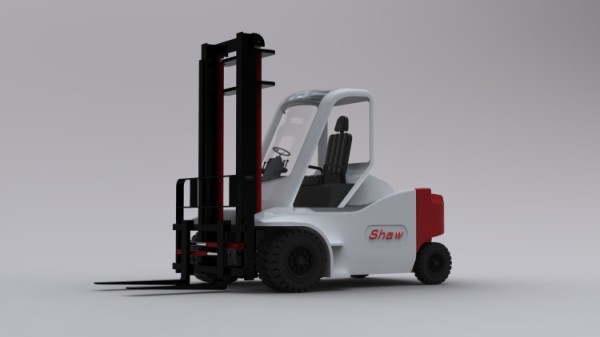 Shaw Handling will launch its iLift range this year. |
Abu Dhabi-based Shaw Handling has been affected by the global recession and has delayed the launch of its forklift range until the fourth quarter of 2010.
Forkliftaction.com News previously reported that the new forklift manufacturing company started by British-born David O'Callaghan would introduce its products to the market at the end of last year
(Forkliftaction.com News #405).
"The global recession has caused some problems - not as bad as others, as we have started without the expensive manufacturing plants that some of our competitors have, but it has affected us in other areas," O'Callaghan tells
Forkliftaction.com News.
He says that Shaw will test its i50-i80 (5-8 tonne capacity) forklifts in March and expects production to start in the second quarter of 2010.
Production of the i100-i180 (10-18 tonne capacity) forklifts and iECH empty container handler is slated to begin in the third quarter of this year, enabling Shaw to launch its full product range by the end of 2010.
O'Callaghan singles out Shaw's 6-tonne forklift, the i60, as a potential "class-leading forklift".
With a length to fork face of 3.181 metres (10.44 feet), width of 1.908 metres (6.26 feet) and turning radius of 2.796 metres (9.17 feet), the i60 is expected to be more efficient then its competitors.
O'Callaghan compares the i60 forklift to the Linde H60 forklift, which he says is "probably one of the best trucks on the market".
"The Linde H60's service weight is 9,855kg (21,727lbs), that's over 2,000kg (4,409lbs) heavier than the i60. Its length to fork face is 3.395 metres (11.14 feet) while its width is 2.262 metres (7.42 feet) and its turning radius, 3.06 metres (10.04 feet).
"Both use hydrostatic transmission but as the i60 is much lighter, it will be much faster on acceleration and more fuel-efficient. Also being shorter, narrower and having a better turning radius, it will be more manoeuvrable."
"The price of the i60 will be very competitive compared to other manufacturers but the real big saving will be on the larger trucks and ECH trucks that will have an hourly fuel consumption of about 8-9l/hr compared to [competitors'] 12-15l/hr," O'Callaghan adds.